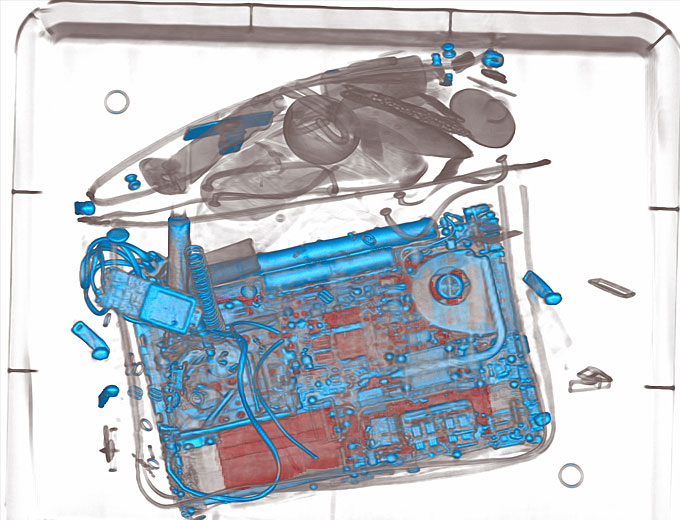2018 ‘ASTORS’ Homeland Security Awards Winner, the U.S. Department of Homeland Security (DHS) Science and Technology Directorate (S&T), has announced eight finalists in the first stage of the Opioid Detection Challenge.
The Opioid Detection Challenge is a $1.55 million global prize competition for rapid, nonintrusive detection tools to aid in finding illicit opioids being transported in international mail.
S&T is collaborating on the Challenge with the U.S. Customs and Border Protection (CBP), also an agency recognized in the 2018 ‘ASTORS’ Awards Program, the Office of National Drug Control Policy (ONDCP), and the U.S. Postal Inspection Service (USPIS).
(“This competition is part of the comprehensive government effort to address the opioid crisis that is devastating too many American communities,” said DHS Senior Official Performing the Duties of the Under Secretary for Science and Technology William N. Bryan. “New tools and technologies offer a critical opportunity to more quickly and accurately detect opioids before they enter the United States.” Courtesy of DHS Science and Technology Directorate and YouTube. Posted on Mar 21, 2019.)
“I am alarmed with dangerous illicit opioids traveling through our international mail system not only because they feed the devastating opioid epidemic in our country, but because they put our operators at risk,” explained Acting Secretary Kevin K. McAleenan.
“I am very impressed with the creative detection technologies submitted, and we look forward to deploying new solutions in operational environments.”
In Stage 1, the Challenge called for well-developed plans for automated, user-friendly tools and technologies that have the potential to quickly and accurately detect opioids in parcels, without disrupting the flow of mail.
Stage 1 of the Challenge received 83 submissions from U.S. and international innovators, and closed on April 24, 2019.
The Stage 1 finalists are:
Atomic-level Drug Detection (Dynaxion):
- A solution to use high-frequency radio waves in a particle accelerator technology developed by the European Organization for Nuclear Research (known as CERN).
- As neutrons and gamma rays pass through parcels, the solution analyzes the energy spectra produced.
(Learn More about Dynaxion. Courtesy of HighTechXL and YouTube. Posted on May 9, 2019.)
Automated Multimodal Opioid Detection (Battelle):
- A layered approach to opioid detection.
- Machine learning algorithms are applied to images captured through dual-energy radiography and hyperspectral imaging.
Enhanced X-ray Diffraction (HALO X-ray Technologies):

- A solution to detect the presence of opioids by measuring how X-rays are diffracted when they pass through a parcel.
- By emitting the X-rays in a conical structure, this solution generates a stronger signal and improves the accuracy and speed of detection.
Nonimaging Concealed Drug Detector (One Resonance):
- A quadrupole resonance technology that uses radio-frequency signals to search for specific materials.
- An alarm is triggered when a signal associated with an illicit substance is detected.
(Learn More about One Resonance Technologies. Courtesy of One Resonance and Vimeo.)
Noninvasive Detection Using Molecular Signatures (GTBM, Inc.):
- A solution to use ultrasound technology in a molecular resonance detector that transmits sound waves and analyzes the returned frequencies.
- These frequencies are analyzed to define the distinct atomic/molecular signature of the target sample.
NQR Detection of Nitrogen-Containing Substances (Vadum, Inc.):
- A nuclear quadrupole resonance (NQR) technology that emits radio-frequency pulses to detect specific nitrogen-containing molecules.
- Illicit substances resonate at different frequencies, allowing detection of targeted compounds.
Operator-free X-Ray Diffraction (XID, LLC):
- An energy dispersive X-ray diffraction (EDXRD) technology that uses a polychromatic beam to increase signal strength and detection speed.
- Diffraction patterns are compared with a library of known threats.
Scanner and Algorithms for Automatic Opioid Detection (IDSS Holdings):

- A solution that combines a 3D X-ray computed tomography (CT) scanner with automated detection algorithms.
- It detects anomalies in X-ray images based on the scanned item’s features and physical properties.
A panel of expert judges in forensic science, postal operations, drug interdiction, industrial engineering, and artificial intelligence helped to select the eight finalists, according to the selection criteria.
Each of the aforementioned finalists will receive $100,000 in cash prizes and advance to Stage 2 of the competition.
In Stage 2, finalists will participate in a 14-week prototyping accelerator, during which they will develop their plans into testable prototypes and compete for an additional $750,000 in cash prizes.
Stage 2 culminates in a live test event hosted by DHS, where finalists will convene for on-site testing of their prototypes.
The Challenge expects to award one $500,000 grand prize and one $250,000 prize to a runner-up.
“A critical part of addressing the addiction crisis is finding new ways to stop the flow of deadly drugs coming into our country,” said ONDCP Director Jim Carroll.
“This is exactly why we have taken a whole-of-government approach and launched this competition.”
“The responses from innovators, universities, and technology leaders have been outstanding.”
“We will continue to support the development of these creative solutions that have the potential to detect opioids and ultimately save lives.”
“A significant challenge in the past few years is the increasing volume of parcels in international mail,” added DHS Senior Official Performing the Duties of the Under Secretary for Science and Technology William N. Bryan.
“Novel technologies are critical to help us screen these parcels for dangerous drugs like fentanyl.”
“We are excited to support these teams as they advance their innovations in the next stage of the Challenge.”
Chief Postal Inspector Gary Barksdale said, “We are encouraged by the levels of innovation submitted by these finalists and the possibilities of each technology.”
“The U.S. Postal Inspection Service is looking forward to the next steps of the Challenge and finding better ways to identify and stop opioids from coming into our communities and our homes.”
The abuse of opioids such as fentanyl has created an unprecedented public health crisis across the United States, with more than 130 people in the United States dying from opioid overdoses every day.
(Learning More. The disturbing video of three people suffering from a fentanyl overdose in August 2018 at a Shell gas station in Winter Springs was released by the Seminole County Sheriff’s Office last week in order to raise awareness about Florida’s devastating opioid epidemic. In the footage, deputies can be seen treating two men and a woman who had allegedly taken fentanyl, a synthetic opioid 50 to 100 times more potent than heroin, that they thought was cocaine. All three victims survived. Courtesy of Daily Mail and YouTube. Posted on Feb 27, 2019.)
Challenge Submission Solutions Were Directed to Meet the Following Requirements:

- Solutions cannot physically penetrate the parcel in any way
- Solutions cannot involve pretreating the parcels with powders, sprays, solutions or liquids
- Solutions must rely on information gleaned from the physical parcel, such as height, weight, appearance, handwriting, etc.; solutions may not rely on external data, such as information about the sender and recipient that cannot be discerned from the package itself, or information from government or private/commercial databases
- Solutions must be moderate in size, no greater than 180″ x 81″ x 78″
- Solutions must be able to process parcels up to 27″ x 17″ x 17″ in size
- Though not a requirement, solutions should ideally be able to process parcels up to 27″ x 21″ x 14″ in size
International mail has been identified as a route for illicit opioids entering the United States, which is commonly transported in nearly pure, powdered form, allowing large-scale drug trafficking to occur through very small packages sent by mail.
To Learn More more about the Opioid Detection Challenge, visit opioiddetectionchallenge.com.
(Learn More. U.S. Customs and Border Protection is challenging you to bring your innovative ideas to join the fight against illegal synthetic opioids entering our country through international mail every day. Do you have the technology to detect illegal synthetic opioids and other narcotics in the mail? Courtesy of U.S. Customs and Border Protection and YouTube. Posted on Apr 9, 2019.)
8 Finalists: $1.5M Challenge to Detect Illicit Opioids Entering US via Mail, accessed 20 June 2019, https://americansecuritytoday.com/8-finalists-1-5m-challenge-to-detect-illicit-opioids-entering-us-via-mail/






Comments are closed.